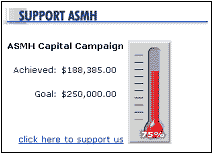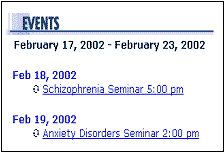|

April 2002 - Issue 12
Best Practices in Web Content Management:
The Cardinal Rules
Email can be an inexpensive and timely vehicle for reaching out to supporters, but are your emails too long? Is your organization using email to drive people to stale content on a static Web site? Does your Web site entice people to return often to read more and/or take action in support of your mission? Is the Web site content relevant to people's interests? It's important to ask these questions to determine whether your Web site is working for your organization. The three cardinal rules for keeping constituents engaged through Web content are:
- Optimize the balance between content in emails and on your Web site
- Update content frequently to ensure freshness
- Personalize content for different groups of constituents to increase relevance
Balance content in emails and on your Web site
Email is a great way to reach out to supporters, but most people do not like to read long emails. Keep text in the body of an email to a minimum -- have short paragraphs with links to a Web site for more information. News stories that are featured as headlines or short stories in email newsletters can be covered in more depth on the Web site. Also highlight related articles or information on the site.
Update content frequently to ensure freshness
Nobody reads last week's newspaper, so why would anyone want to return to a Web site if the content has not changed? Most nonprofits update their content very infrequently event dates and job postings go stale, it's a long stretch between the posting of new stories and, all too often, Web site changes grind to a halt when the "Web master" goes on vacation. When the World Wildlife Fund fully embraced the Internet as a communications and relationship-building channel, the organization moved from a protocol of updating content every six months to every month, then every week, then every day, then four times each day. This frequency may seem daunting to many groups, but today's new Internet tools allow non-technical, nonprofit professionals to update Web content as easily as updating a Word document. With such tools, updating the Web site becomes an integral part of every day work.

Fig. 1 Today's new Internet tools for nonprofits have
familiar, easy-to-use features like this tool bar
Because people generally visit an organization's home page unless clicking on a specific link in an email, keeping the home page fresh is critically important. Using auto-updating, data-driven content elements can be a good strategy to create interesting, fresh content. Examples of auto-updating content are: campaign thermometers, which automatically update as gifts are made; the current week's events schedule which automatically pulls data from a calendaring/events system; and the latest survey results.
 
Fig. 2 Examples of auto-updating content
Another strategy for maintaining fresh Web content is allowing constituents to post content on the site. Instead of having just a few internal content contributors, the organization now has hundreds and even thousands of content creators. On its fundraising site, http://www.komenvirtualrace.org/, The Susan G. Komen Breast Cancer Foundation allows constituents to contribute personal "survivor stories." Because it's important to have editorial control, a staff administrator reviews and approves submissions before posting them on the Web site.
Personalize content to increase relevance
Any direct marketer knows that the more relevant the information presented to constituents, the better the response. Personalizing Web content involves learning about a constituent's interests and then providing content relevant to his or her preferences, including news topics or events in which the individual has indicated an interest. Strategies for collecting interest information range from conducting online polls to tracking constituent interactions as they click on specific links on the Web site or emails. With the right tools, a nonprofit can tailor campaign-related content to a specific individual. For example, in the case of a higher educational institution, an alumni could be presented with a tailored appeal based upon his or her year of graduation (a class challenge). Web content can also appear personal through greeting return site visitors by name (assuming they have registered with the site) similar to a consumer's experience on many commercial Web sites like http://www.expedia.com/.

Fig. 3 Example of personalized Web site content
Summary
Email is a highly efficient method for reaching out to supporters to drive them to an organization's Web site, and continuing to pull them back is key it can greatly strengthen relationships with constituents. The good news is that fundraisers do not have to rely on technical experts to update content because today's newest Internet tools make updating content easy. Click here for tips on selecting a Web content management tool.
|






